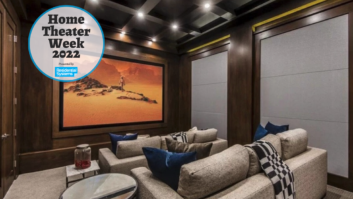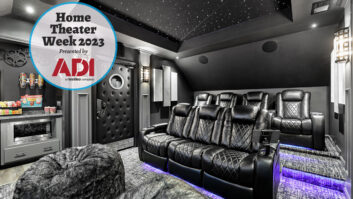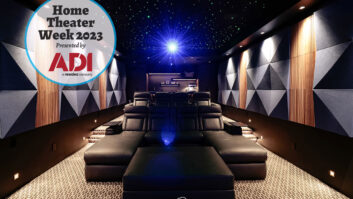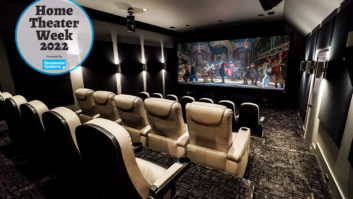
It’s still pretty rare to encounter an integrator that provides regular system checkups.
Sadly–unless Google (or Alphabet, or whatever it is now) gets a move on–we’re all going to keep getting older. One thing we accept as part of that process is annual checkups with the doctor. Our bodies are fancy machines that require service to keep them running in top form. Speaking of fancy machines, don’t we all love our cars? They have to go in for regular service, too. Fail to change the oil and rotate the tires, and performance declines in an appreciable way. Guess what? A sophisticated and fine-tuned home theater is no different. Yet it’s still pretty rare for me to encounter an integrator that provides regularly scheduled system checkups. We need more folks to jump on this boat! It’s a great way to ensure clients’ continued satisfaction, bring a little income your way, and pave the road to future upgrades.
I think one reason for the dearth of continuing service is that most systems don’t actually get tuned in the first place. If you don’t set the thing up correctly during the initial commissioning and don’t document all the test results, it’s pointless to go back later to see if it’s still performing; there’s no benchmark. You should know by now how to properly calibrate and document sound and picture systems, so I won’t rehash it, except to say that you must have original documentation. On the audio side, the minimum is final equalized frequency response plots for every channel. (Don’t forget measurement mic locations and analyzer settings.) It would be great to keep a set of electrical signal measurements, too. However, if you verify all that on the front end, things that go wrong will almost always show up in the frequency response plots you take during a checkup. You have to draw the line somewhere, or you end up repeating the entire calibration. Video is a little easier to quantify thanks to awesome software like CalMAN. These programs make it easy to save a report of the calibration.
So, armed with your original notes and charts, you head back to see the client. What kind of stuff might have happened since you were there? How do you check for it? I have yet to do a yearly checkup and find nothing out of whack. Common issues include:
- A breaker has been tripped for who knows how long, and a few amplifiers are off
- A speaker driver has blown or frozen up
- A subwoofer power cord has been disconnected
- A surround processor has reset to factory defaults and the levels, delays, etc., are all wrong
- A product in the electronics chain has failed, and no one noticed. Channels may be missing
- A surge or strike has taken some but not all of the gear, so there is sound and picture but not everyone is home
- The projector has reset to factory defaults, so the calibration is off.
- The projector lamp is on its last legs, but still puts out picture so the client hasn’t complained.
Definitely re-measure the frequency response of every channel, and compare the results to the original. This will catch a channel that is missing or in some bad failure mode. Also measure channel levels with an SPL meter, and verify delay settings by listening to gated narrowband pink noise signals at half points between adjacent channels. The pulsing pink noise can also reveal rattling or distorting drivers. A good final check is to sweep each speaker up and down in frequency and level using a single tone sine generator. Listen for any noise from the speaker or room other than the pure tone.
Fire up the projector and check screen luminance, primary/secondary color coordinates, grayscale tracking, and gamma. Follow the procedure of the test software you used originally, and generate a new report to compare to the original. Keep in mind that lamp-based projectors can wander quite dramatically depending on the age of the lamp during initial calibration, and how many hours it has been run since. It’s typically not reasonable to expect the same result after a year, but you and the client still need to know how far it has fallen off.
We’re all looking for ways to separate ourselves from the competition. Offering annual or semi-annual system verification is a great way to do that. You can structure it different ways, such as a one-time add-on fee for, say, three years of checkups; individual service calls; or even a free incentive for signing with you instead of the other guy. Don’t forget, getting back in the home is a perfect opportunity to tease upgrades. These days, 4K video and immersive audio provide plenty of upgrade paths to reinvigorate your clients’ passion for their systems.
Chase Walton contributed to this column.





